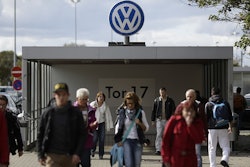Autonomous vehicles are expected to provide many societal benefits including reduced traffic congestion, greater independence for elderly and people with disabilities, and improved overall vehicle safety. Since people will literally be putting their life — and their families lives — in the hands of these automated vehicles, widespread adoption will depend on earning the trust of regulators and ultimately the public.
If you’re old enough, perhaps you recall when power windows and door locks were viewed with skepticism as “just something else to fail”. Almost all vehicles now include power windows and locks, along with cruise control and ABS brakes as standard features. So, change is good and inevitable. Handing over complete vehicle control, however, requires a significantly greater level of trust.
The National Highway Traffic Safety Administration (NHTSA) reports that 94 percent of vehicle accidents are related to human choice or error [Singh, S. (2015, February). Critical reasons for crashes investigated in the National Motor Vehicle Crash Causation Survey. (Traffic Safety Facts Crash Stats. Report No. DOT HS 812 115). Washington, DC: National Highway Traffic Safety Administration.]; of which 41 percent were recognition errors (inattention, distraction, inadequate surveillance), 31 percent were decision errors (driving too fast, misjudgment of others’ actions or others’ gap and speed), 11 percent were performance errors (overcompensation, poor directional control) and 7 percent were non-performance errors (sleep being the most common). This data suggests a tremendous opportunity for accident reduction. However, as the recent 34 million vehicle airbag recall illustrates, public perception and regulator support are critical and can change quickly. Manufacturers must be prepared to defend their systems, particularly early on, to win and maintain the public's trust.
Challenge
To safely navigate a car from one destination to another requires negotiating a variety of dynamic tasks simultaneously:
- Navigate the available roadways between destinations (know where you’re going)
- Operate the vehicle safely and within the local legal requirements (obey the laws)
- Observe objects and events and respond accordingly (react appropriately to stuff that happens)
To accomplish these tasks manufacturers utilize many different systems within a single car. For example, GPS systems and mapping software may be used for navigation, while video cameras are used to identify pedestrians, cyclists and other objects along the way, and sensors including LIDAR and RADAR are used to identify vehicles in front, behind and to the sides — with different sensors used for long-range, mid-range and short-range distances. Each camera and sensor input is evaluated by software analytics for specific tasks, with the combined results determining vehicle performance. This is a simplified summary to illustrate the general concept. Autonomous cars have the benefits of continuous 360o views (no blind spots) and can determine safe distance decisions based on rates of speed for itself and other vehicles or objects. Not to mention they aren’t distracted by the latest text or incoming phone call. Of course, there are many challenges for this technology, such as managing dynamic weather and lighting conditions, and responding to unanticipated actions like a car running through a red light.
Data
The amount data generated by autonomous vehicle cameras and sensors is significant. Typical test vehicles today can include over a dozen LIDAR and RADAR sensors, and several video cameras. It’s not unusual for a single test car to generate multiple TB’s of data daily. With multiple test vehicles on tracks and public roads each day, generating multiple TBs of data, it’s critical that manufacturer’s have a good data management plan. That includes appropriate in-vehicle storage capacity to complete test cycles without interruption, then getting that data quickly ingested to the development system for engineering analysis and modeling, and finally retaining and protecting the data for back-testing and for regulatory and legal purposes.
Data Management
As discussed above, sizing the in-vehicle storage depends on the number of cameras and sensors deployed and the test duration between data uploads. For example, a car generating 4TBs per day that may run two weeks (10 days) of road testing would need at least 40TBs of storage capacity. Vehicle conditions are not controlled like a typical datacenter, so environmental considerations like temperature, humidity, shock and vibration must be evaluated. Fast read performance from the in-vehicle storage system with a fast interface, such as fibre channel, to the development system will minimize ingest time, which is important for prompt engineering feedback and running more vehicle tests. The data stored on the development system must be directly accessible by the engineering team; storage performance must sustain the analytics and modeling requirements and support multiple engineers sharing the same content coincidentally. Since this data is extremely valuable to the organization, it must be protected and retained indefinitely. As data ages and becomes inactive to the development process it should remain preserved and protected on lower cost storage, while still remaining readily accessible to the engineers. This approach will control costs as data inevitably grows. Retention of this data is needed to support back testing of new developments, for regulatory and legal protections, and possibly of demonstration purposes to gain confidence with prospective customers and the general public.
Kieran Maloney is Product Marketing Manager at Quantum.






















